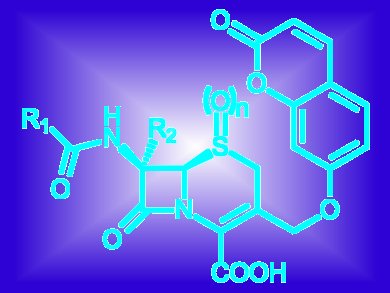Tubercle bacilli, tuberculosis’ causative agent, express the β-lactamase BlaC. This enzyme cleaves the β-lactam ring present in the antibiotic cephalosporin, yielding hydrolyzed β-lactam and a 3’ leaving group. By replacing the latter with a fluorophore, it is possible to create cephalosporine-based fluorogenic probes able to detect the tubercular pathogens. Upon enzymatic attack, the probes release the fluorophore, thus turning on the fluorescence. However, since they are aspecifically activated by other bacteria’s β-lactamases, they do not allow an accurate diagnosis of the disease.
Hexin Xie, Stanford University, USA, and colleagues, overcame this limitation. The team designed novel cephalosporin-based fluorescent probes by introducing a methoxy group at the 7-C position of cephalosporin’s β-lactam ring. A green fluorescent probe, CDC-OMe, (pictured with R1=Bn, R2=OMe) proved to be highly specific for BlaC and able to detect less than 100 living pathogens in unprocessed human sputum within 10 minutes.
- Rapid point-of-care detection of the tuberculosis pathogen using a BlaC-specific fluorogenic probe,
H. Xie, J. Mire, Y. Kong, M. Chang, H. A. Hassounah, C. N. Thornton, J. C. Sacchettini, J. D. Cirillo, J. Rao,
Nat. Chem. 2012, 4(10), 802–809.
DOI: 10.1038/nchem.1435




